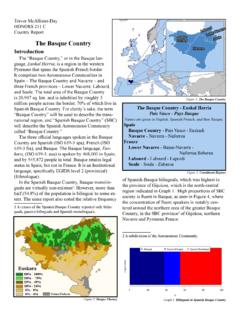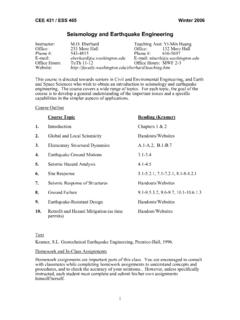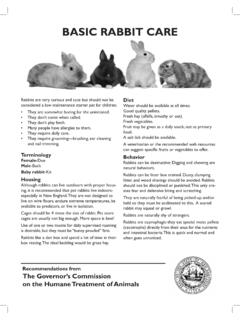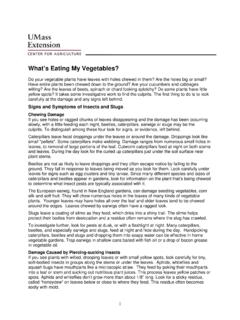Transcription of Rabbit hawking with Harris’s hawks - UW Faculty Web Server
1 Rabbit hawking with harris ' hawks by Toby Bradshaw NB: Throughout this chapter the term Rabbit often is used loosely to refer to any of the Leporid group of Lagomorphs known colloquially as rabbits (Oryctolagus and allied genera), cottontails (Sylvilagus), pygmy rabbits (Brachylagus idahoensis), or hares and jackrabbits (Lepus). harris ' hawks and rabbits a classic contest The essence of exciting falconry is the close contest between predator and prey. Some of these contests have become classics Merlins and skylarks, goshawks and pheasants, peregrines and grouse, Cooper s hawks and quail. Can there be a classic quarry for a raptor as versatile as the harris ' Hawk? Many harris ' hawkers would say that rabbits fill the bill.
2 The harris ' Hawk is known around the world for bringing an astonishing variety of quarry to bag, catching feather from sparrows to swans, and fur from voles to deer. Some harris ' hawkers specialize on quarry such as squirrels, quail, small birds, crows, or ducks. However, it is safe to say that the bread and butter of North American harris ' hawking are rabbits. There are good reasons for this. First and foremost is that harris ' hawks and rabbits are well-matched adversaries in the classic tradition. This should come as no surprise, because every North American harris ' Hawk is the descendant of a long line of successful Rabbit hunters, just as every cottontail and jackrabbit in the Sonoran and Chihuahuan deserts has ancestors that used their speed, stealth, strength, and wits to make a family of harris ' hawks go hungry.
3 Darwinian coevolution has kept things interesting for both sides in every generation. Nearly any harris ' Hawk is faster than any Rabbit , at least in the absence of wind, but the difference in speed is not overwhelmingly in favor of the hawk. And while speed is important to both hawk and Rabbit , most rabbits aren t caught in a drag race. More often, the Rabbit uses its intimate knowledge of its habitat along with its phenomenal ability to make sharp turns to evade pursuers, while the experienced harris ' Hawk continually positions itself to take advantage of the beaters, dogs, and cast-mates to get a shot at the Rabbit when it is forced to cross a gap in the cover or has slowed while making a turn. The combination of speed and strategy on both sides means that the thrill of the chase never fades for hawk nor hawker (nor, presumably, for the Rabbit )!
4 Second, most North American hawkers have ready access to at least one species of Rabbit . There are eleven species of cottontail (Sylvilagus spp.), nine species of hare (Lepus spp.), and the pygmy Rabbit (Brachylagus idahoensis) native to North America, plus the introduced brown hare and European Rabbit 1(Oryctolagus cuniculus). The harris ' hawker s favorite quarry thus thrives in practically every biome from tundra to forest, from the driest deserts to the steamiest swamps, and from urban industrial areas to pristine wilderness. A harris ' hawker with a taste for adventure can go coast to coast and border to border to sample North America s unparalleled variety of rabbits and their habitats.
5 Rabbits are considered legitimate quarry, or even pests, by hunters and non-hunters alike. Jackrabbits, in particular, are classified as vermin in most of North America, and frequently may be hunted with no closed seasons or bag limits. Many farmers and ranchers are protective of their pheasants, quail, and grouse, but a Rabbit hawker is almost never refused permission to hunt. In urban and suburban settings, where gun hunting is forbidden, a harris ' hawker is usually a welcome guest of the landowner anxious to keep a lid on the local Rabbit population. Since rabbits breed like .. well, like rabbits, their populations can sustain high hunting pressure. The cyclical peaks of Rabbit numbers are one of nature s greatest spectacles, and no Rabbit hawker should forego the opportunity to travel with a cast of harris ' hawks to exploit these decadal plagues.
6 Third, from the falconer s point of view, one of the most endearing traits of rabbits is the squealing sound that they make when captured by a hawk. What falconer has not cocked an ear toward the conclusion of a Rabbit flight in heavy cover, hoping to hear the sweet sound of success as the hawk crashes in? A squealing Rabbit is the acoustic version of telemetry for the hawk lost on a kill. An accomplished Rabbit hawker can tell from the sound of the squeal not only whether the quarry is a cottontail or a jack, but even whether the hawk has secured the head or is locked on to the Rabbit s hindquarters. Fourth, rabbits and hares have been considered choice table fare for millennia. Neither rabbits nor hares have much fat in the muscle tissue, and thus are cooked in ways that keep the meat moist.
7 The tenderloins and hind legs of cottontails are a delicate white meat, and can be prepared in many ways, from pan fried to stewed. The flesh of hares is much different a deep red color, almost purple. The classic dish prepared with hare is hasenpfeffer, or jugged hare. The meat is marinated in an oil mixture to keep it moist when cooked. And, finally, rabbits (especially cottontails) inspire harris ' hawks to exert their best efforts in the field. It is heart-stopping to watch harris ' hawks pour their full measure of energy into the chase, throwing caution aside to stoop and rebound frantically until the catch is made or the Rabbit finds an impenetrable refuge. Jackrabbit hawking has, in addition, a real element of danger for the harris ' Hawk, testing the hawk s courage as well as strength, speed, persistence, and footing.
8 2 Choosing and training the harris ' Hawk for Rabbit hawking North American falconers live at the northern limit of the harris ' Hawk s range. Both northern subspecies (Parabuteo unicinctus harrisi and P. u. superior) feed extensively on rabbits in the wild and are better suited to hawking rabbits and especially jackrabbits than the considerably smaller nominate subspecies (P. u. unicinctus of South America). By comparison with other North American raptors commonly flown at rabbits and hares, the harris ' Hawk is neither as athletically gifted as the goshawk nor as powerful as the Red-tailed Hawk, but the harris ' Hawk is uniquely suited to the sport of falconry because, unlike nearly all other birds of prey, it is a social animal whose natural history includes cooperative hunting.
9 harris ' hawks understand instinctively, perhaps better than any other species of raptor, how to work with partners human, canine, and avian in the field. Sociality is essentially a preadaptation for falconry. In the wild, harris ' hawks normally hunt in family groups consisting of the breeding pair (or trio, since polyandry is common) and their offspring from the previous year. By hunting cooperatively, harris ' hawks are willing and able to tackle much larger prey than a single hawk could, providing a wider prey base with which to provision the nestlings. Perhaps social behavior and pack hunting have arisen in the harris ' Hawk as adaptations to their desert environment, where prey may be scarce or may experience large year-to-year fluctuations in population.
10 Permits to trap passage harris ' hawks may be obtained in a few southwestern states, and captive harris ' hawks have been bred since the 1970s in the and Canada. Intensive, large-scale selective breeding for desirable falconry traits ( , tameness, eagerness for quarry, sociability), has been practiced by some harris ' hawkers since the 1980s, with a few well-known pedigrees now in at least their sixth generation. In particular, Tom and Jennifer Coulson (Louisiana, USA) have been extraordinarily successful in the genetic improvement of harris ' hawks for falconry. They have trained and flown more than 100 eyasses, selected from among the more than 700 offspring they have produced from three dozen breeding pairs, and retained only the top few percent of offspring to serve as parents for each successive generation.



















